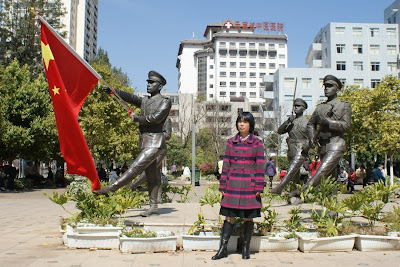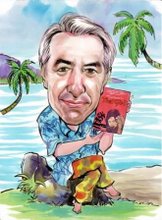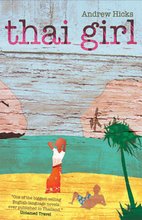
An old couple in a Surin village smile as they prepare a meal but are they truly poor? This article examines the details of their daily lives to suggest whether Thai society runs at two speeds, for the urban elites who cream off the wealth and the country people who have been left far behind.

This picture shows a typical newly built house in our soi.

The old couple live and sleep under these grass roofs.

A small electric pump supplies them with water.

An 'iron buffalo' is expensive but is needed to till the fields.

The harvest is kept in sacks in a handsome rice barn.

Every night the buffaloes are brought back to this barn.

Every day is spent taking the animals out to find grazing.

Hot hours are spent digging crabs to glean a few mouthfuls.

This, the poorest house in our soi, looks pretty desperate.
Was it Thai rural poverty that ignited the recent upheavals and violence on the streets of Bangkok?
A yawning wealth gap can certainly cause instability and, while I’m not an economist, it seems that the gap between the rich and poor in Thailand is very wide indeed. The wealth represented by Bangkok shopping malls such as Central World Plaza and the very basic conditions in which people live in the villages are worlds apart. When a society is hierarchical and corrupt, social mobility is limited and resentment among the disenfranchised poor could light the powder keg.
So are Thai farmers poor? This question is endlessly debated and there are some obvious points to be made.
In Isaan for example there are now many more mobiles, motor bikes and pickups than a few years ago, though easy credit for buying luxuries can be a terrible trap. Furthermore, the infrastructure of roads and power is excellent and markets are well stocked.
I’ve heard corn-fed farang confidently asserting that in the countryside nobody needs to go hungry but others argue strongly that rural poverty is as grinding as it is hidden. My wife’s village in Surin where we have lived for some years is relatively well off, but even so 45% of the children in the school are under the body weight recommended by the Thai Ministry of Health. Yet they look happy enough.
During the Thaksin years money flowed into the rural regions but in changing times there are both winners and losers. You see the winners everywhere enjoying their Nokia and new Honda Dream but hunger is invisible.
Let me therefore present to you a ‘case study’ of an elderly couple in our village and then pose the question, ‘are they poor?’. Have the rural poor been left so far behind the urban middle classes that Thai society could become unstable?
The couple that I shall describe are immediate neighbours in our village. I have known them for a long time and they are delightful people. The old man is gentle and smiling and Mama is always full of fun, the life and soul of the party when she dances everyone to exhaustion. Now in their early seventies they continue to work hard as they have done all their lives. As small farmers they work 365 days a year and they have hardly ever left the village, nor ever had a holiday. The concept of a holiday just does not exist for them.
Like everyone they are rice farmers with a tiny holding of land. They live in one of the better cement block and wood houses on our lane, though they tend to live and sometimes sleep outside in a grass thatched shelter under which they burn a fire to keep warm in the cooler months.
They raised a big family of seven children all of whom have moved away to find work in the cities and factories. After minimal education, there is no way up for them. The two youngest sons are unmarried and come and go from the village as and when they can find low paid casual work elsewhere, such as cutting sugar cane. The others visit rarely such as at Songkhran, the Thai new year festival when their factories, eight hours away, close down for a few days.
They too have their families to feed and, I suspect, can only occasionally send back a few baht to help support their Mama Papa. The old couple are thus largely dependent on their own resources for food.
Their assets include their house, the land and the rot tai or ‘iron buffalo’ which is necessary to till the soil. Water is drawn from a bore hole by an old electric pump. Regular expenses include monthly payments for electricity, fuel and repairs for the rot tai, occasionally pumping out the toilet sump and paying the money contributed at parties, funerals and weddings. Medicines are a significant cost and not so long ago Mama fell ill and Papa had to sell a buffalo to pay the hospital fees. While former prime minister Thaksin introduced an element of free medicine, the locals still have to pay big money if tests, procedures and a hospital stay go beyond the minimal.
Rice cultivation keeps them busy for half the year and provides them with their staple food that they keep in their rice barn. Cultivation is not without costs though. Seed, fertilizer, pesticides, fuel for ploughing and bringing the rice home, labour for planting and harvesting, hiring a thresher and then milling the brown rice means that this is not food for free.
Papa keeps several buffaloes which at night are kept in a rough barn by the house. There are no enclosures for grazing cattle so every day of the year Papa takes them out on a rope to wherever he can find a few blades of grass in the dust. He sits and watches them eat and moves them on from time to time. If his three animals bring one offspring to maturity annually, he can sell perhaps one a year when they need the cash. For this almost full time daily work his annual income is thus about 15,000 baht on selling a fat buffalo.
Around the house they have a few scrawny chickens and grow mulberry leaves for the silk worms which an old lady strips from the stalks, paying them about 40 baht every few months. Coconut and banana trees occasionally yield a few more baht.
Mama has long been the entrepreneurial dynamo, selling bowls of noodles around the villages. Every day she loads up two baskets with noodles, vegetable, spices and a substantial ceramic barbecue and heads off down the lane. The baskets are extremely heavy for anyone to lift and she walks with a swinging gait, the baskets slung on a pole across her shoulders.
Walking to neighbouring villages, she keeps going until the noodles are all sold, each day taking a different route so that customers do not become bored with her food. When cycling out from our house, I’ve met her many miles from home, as cheerful as anyone could be despite the burden of earning perhaps 100 baht a day.
When not selling noodles, Mama also forages for food in the surrounding fields wherever she can find it. There are red ants eggs high in the trees, insects and grubs in the earth and tiny fish, rats, crabs and frogs if you work hard enough to find them. In the long dry season when there is no rain she looks for the holes in the parched rice fields and digs hard in the pitiless heat to find a tiny crab a foot or so down. There is no meat on them but when crushed they add calcium and a little flavour to a hot soup or som tam.
She also collects bamboo shoots and leaves from the countryside such as kilek and sadao which add a bitter flavour when pounded into a paste. Eating a few vegetables for a meal, a volcanic chili sauce of this kind is important to help the rice go down. Everyone fears eating rice with salt only, a bitter memory they don’t want to relive.
At the end of the last rainy season, several times I saw Mama up to her neck in the muddy water of our pond collecting the shoots of pak ahchet, a weed which grows on the surface in abundance. This looks to be a tough life that is enough to kill off any frail old seventy year old but she is full of spirit and has kept going thus far.
The two of them cook on the floor in the kitchen with pots and pans strewn everywhere and while, pathetically thin, they somehow manage to feed themselves.
What I have just described is typical for the people living in our soi, in the rest of the village and, so far as I can see, throughout the wider region. Yet this hard working couple have land, buffaloes and a big family to support them and so are by far from being the poorest of the poor in Isaan.
Many other old people are also burdened by having grandchildren to bring up. I think of one half blind old soul nearby whose husband is an invalid and totally dependent and who has two tiny grandchildren to raise single-handed. Sometimes babies are dumped with the old folk in this way but then the money their parents should be earning for them never arrives.
In our soi there are nine family homes. Almost all of them consist of grandparents with babies and small children while the middle generation of wage earners is almost totally absent, returning perhaps once a year for Songkhran. This separation is necessary to fill the family rice bowls, but it cannot advance the family’s fortunes who inevitably remain near the bottom of the heap. At least they are fed but it is hardly a satisfactory way to raise the children.
Other families sink even lower through taking on credit they cannot afford. Within three hundred yards of our house no fewer than three ordinary families recently bought brand new Nissan pickups on credit for a minimal down payment, hoping to earn money with them to cover the monthly payments. A superficial observer would have thought this was a wealthy soi, but within a year all three pickups had been repossessed and sold off by the finance company, perhaps at an under-value to an insider. Each family was then left with a huge outstanding debt.
One family was taken to court in Surin town and had their home sold from under their feet, while another stripped and sold every piece of wood and corrugated iron from their house and, in the face of threats from debt collectors, went into hiding. I haven’t seen them since.
Farmers often have to borrow to cover the up-front costs of cultivation and when the harvest fails are then left with impossible debts. There is often no way out unless they have a pretty young daughter who will make the inevitable sacrifice in the bars of Bangkok and Pattaya.
Much of the apparent wealth in the villages, such as vehicles and house improvements, is that of salaried government servants such as police and teachers, while most of the rest comes in from outside. Construction or factory work in Bangkok is not well paid and the best wages are earned in Taiwan and Korea, while good money can be made in the girlie bars and, what’s more, by marrying a farang.
So that concludes the brief story of my neighbours and how they live, exemplified by the old couple who are the ones I know best.
But what is my take on all this?
Since the seventies, I have lived in and travelled through much of Africa, India, China and South East Asia and visited some of the poorest of countries such as Burkina Faso and Nepal. I have seen peoples who are poorer, but I still would describe my neighbours as poor, indeed starkly poorer than the urban elites.
The old couple I’ve told you about will not be the ones to go to the barricades, but the next generation of poor farmers may not be able to restrain their anger.
So, in conclusion, do you think my neighbours are unduly poor?
If this represents widespread rural poverty, could it ignite the powder keg?
Andrew Hicks The “ThaiGirl” Blog May 2010































